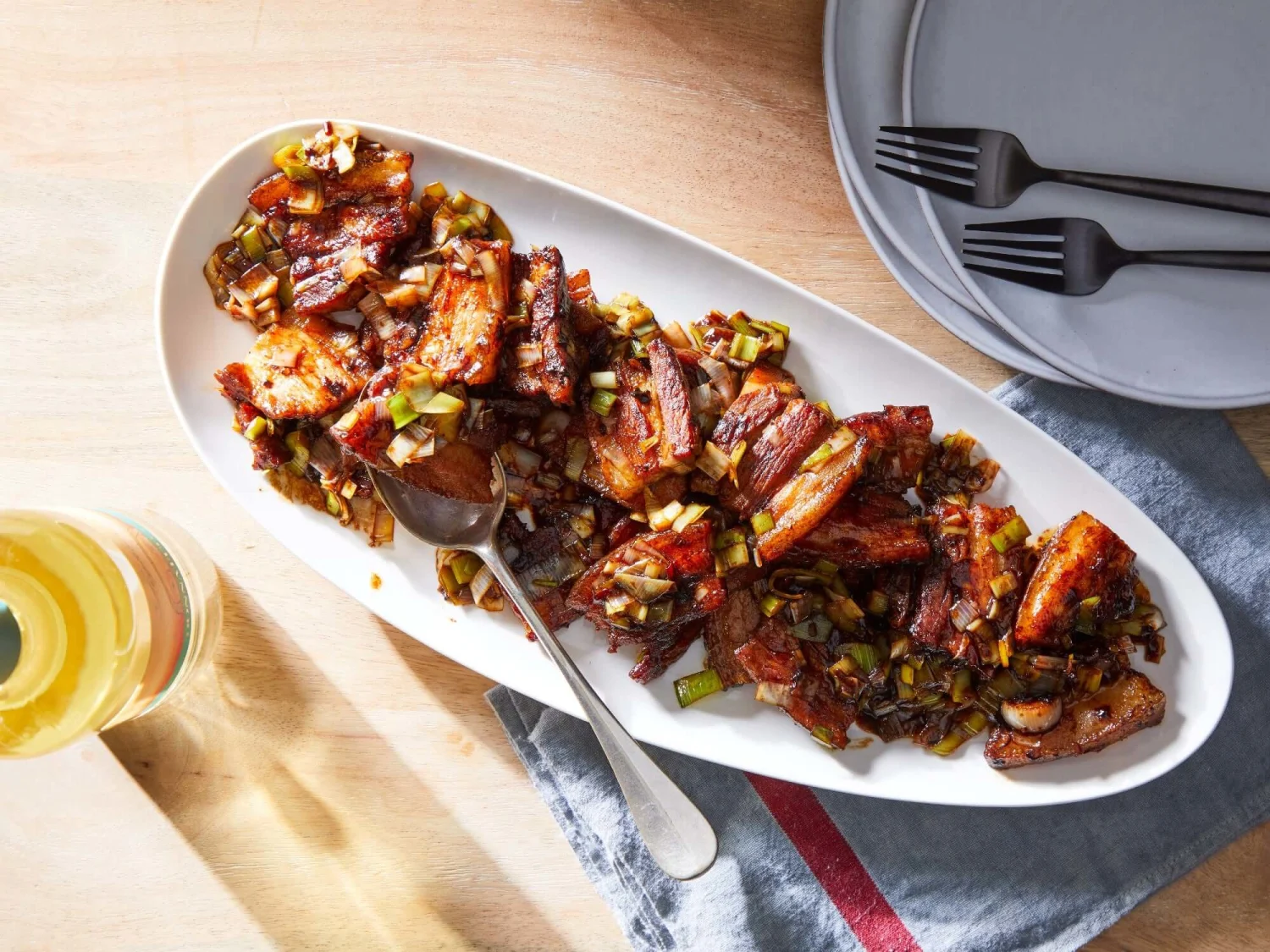
Twice-cooked pork (回锅肉)
A Sichuan dish where pork belly is first boiled then stir-fried with vegetables and spices.
Ingredients
- •Pork belly
- •Leeks
- •Bean paste
- •Soy sauce
- •Garlic
Instructions
Boil pork
Boil pork belly until cooked through
Cool and slice
Let pork cool then slice thinly
Stir-fry
Stir-fry with vegetables and seasonings
Twice-cooked pork, known as Hui Guo Rou (回锅肉) in Chinese, is a signature dish from China's Sichuan province that showcases the region's bold and spicy flavors. This dish gets its name from its unique two-step cooking process, where pork belly is first boiled and then stir-fried with vegetables and seasonings.
The dish originated during the Qing Dynasty when resourceful cooks found a delicious way to repurpose leftover boiled pork by stir-frying it with spicy seasonings. Today, it has become one of Sichuan's most beloved dishes, representing the province's mastery of complex flavors.
The preparation begins with boiling pork belly until tender, allowing it to cool before slicing it into thin pieces. The second cooking stage involves stir-frying the sliced pork until crispy, then adding leeks, fermented black bean paste, and other aromatics. The result is a perfect balance of textures - tender meat with crispy edges, complemented by the crunch of vegetables.
While the traditional recipe calls for pork belly and leeks, modern variations might include different vegetables like bell peppers or bamboo shoots. Some cooks also adjust the spiciness level by varying the amount of bean paste or adding Sichuan peppercorns for that characteristic numbing sensation.
In Sichuan restaurants, Twice-cooked pork is typically served as a main dish alongside steamed rice, which helps balance its rich and spicy flavors. It's often enjoyed family-style, shared among diners as part of a larger meal.
Food lovers should note that while this dish is incredibly flavorful, it can be quite rich due to the use of pork belly. It's relatively high in calories and fat content, so those watching their diet might want to enjoy it in moderation. The dish also contains soy and bean products, which could be relevant for people with specific dietary restrictions.
